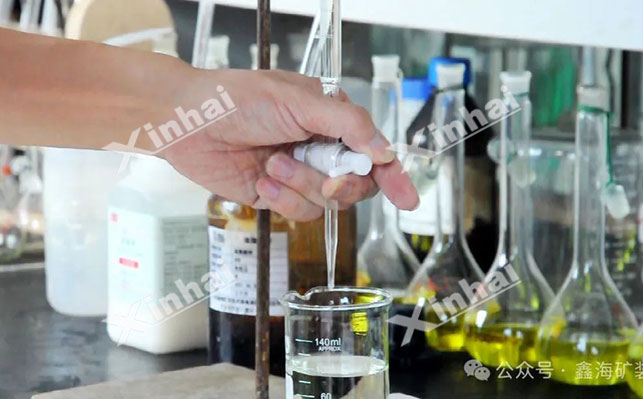In the flotation process of lead-zinc ores, precise control of pH is a critical parameter that determines the efficiency of mineral processing. As a specialized technical team in the field of EPCM+O services for mineral processing, we have confirmed through systematic experiments and industrial practices that the appropriate application of pH modifiers can enhance the overall recovery rate of lead and zinc by 8-15%, while also reducing reagent consumption costs by over 20%. This article will deeply analyze the dynamic influence mechanisms of pH control on flotation performance and provide actionable production optimization solutions.
1.1 Inhibitory Effects in High pH Environments (>10)
When the pH of the slurry exceeds the critical threshold of 10.5, hydrophilic hydroxyl complexes form on the surface of lead minerals, resulting in a 30%-45% drop in the adsorption rate of xanthate collectors. A case study from a lead-zinc mine showed that increasing pH from 9.5 to 11.2 led to a 1.2% decrease in lead concentrate grade and a recovery loss of 14.7%. It is recommended to maintain pH ≤ 10.3 using a lime-sodium carbonate composite modifier to effectively inhibit hydrophilic film formation.
1.2 Optimal Working Range in Neutral to Weak Alkaline Conditions (pH 7-9)
At pH levels between 8.2 and 8.7, the zeta potential of lead minerals reaches -25mV to -30mV, which promotes optimal electrostatic adsorption with butyl xanthate collectors. Industrial tests at a lead-zinc mine indicated that within this range:
Lead roughing recovery stabilized between 92.3%-94.1%
Concentrate Pb grade improved to 58.6%-61.2%
Reagent consumption decreased by 0.15 kg/t ore
1.3 Special Application Scenarios in Acidic Environments (<7)
When ores contain significant amounts of easily floatable gangue, controlling the pH at 5.5-6.5 can achieve selective suppression. In a complex lead-zinc ore project, adjusting pH to 6.2 with sulfuric acid resulted in:
A reduction in MgO content in lead concentrate from 3.8% to 1.2%
A mere 2.1 percentage point decrease in lead recovery
Annual savings of $120,000 in magnesium removal reagent costs

2.1 Enhancement Mechanism at High pH (10-12)
At pH values greater than 10.5, the oxidation of iron sulfide minerals accelerates, significantly suppressing their floatability. A segmented control strategy was employed at a copper-zinc mine:
Lead roughing stage at pH 8.5
Zinc flotation stage at pH 11.2
This approach achieved a zinc recovery rate of 89.7% (an increase of 6.3%) and a concentrate Zn grade of 52.4% (an increase of 4.1%).
2.2 Synergistic Effects in Neutral Environments
When utilizing combined depressants, optimizing within the pH range of 7.5-8.2 can enhance lead-zinc separation efficiency:
The combination dosage of zinc sulfate and sodium sulfite was reduced by 15%
Zinc roughing recovery increased to 91.2%
The interlocking rate between lead and zinc decreased by 0.8 percentage points
3.1 Construction of Intelligent Adjustment Systems
Our developed EPCM+O intelligent control system includes:
Online pH monitoring module (accuracy ±0.05)
Fuzzy PID adjustment algorithm
Automatic reagent dosing device
In applications at a plant with a capacity of 2000t/d, this system achieved:
Reduction in pH fluctuation range from ±1.2 to ±0.3
Annual metal loss decreased by $850,000
3.2 Comparison of Typical Reagent Systems
3.3 Dynamic Optimization Control Model
By establishing a response surface model for ore characteristics, reagent systems, and pH values, we can predict:
Optimal pH setting deviation ≤0.4
Reagent consumption prediction error<5%
Recovery rate fluctuation controlled within ±1.2%
Pre-analysis of Raw Ore: Utilize XRD and MLA mineral liberation analysis to establish an ore floatability database.
Segmented Control: Implement differentiated pH control strategies during roughing, scavenging, and cleaning stages.
Online Monitoring: Collect parameters such as slurry potential, conductivity, and ion concentration every 15 minutes.
Closed-loop Control: Achieve real-time linkage between DCS systems and dosing equipment via OPC protocol.
Through these comprehensive strategies and solutions, we aim to optimize lead-zinc flotation processes significantly, ensuring enhanced recovery rates and cost efficiency for our clients in the mineral processing industry.